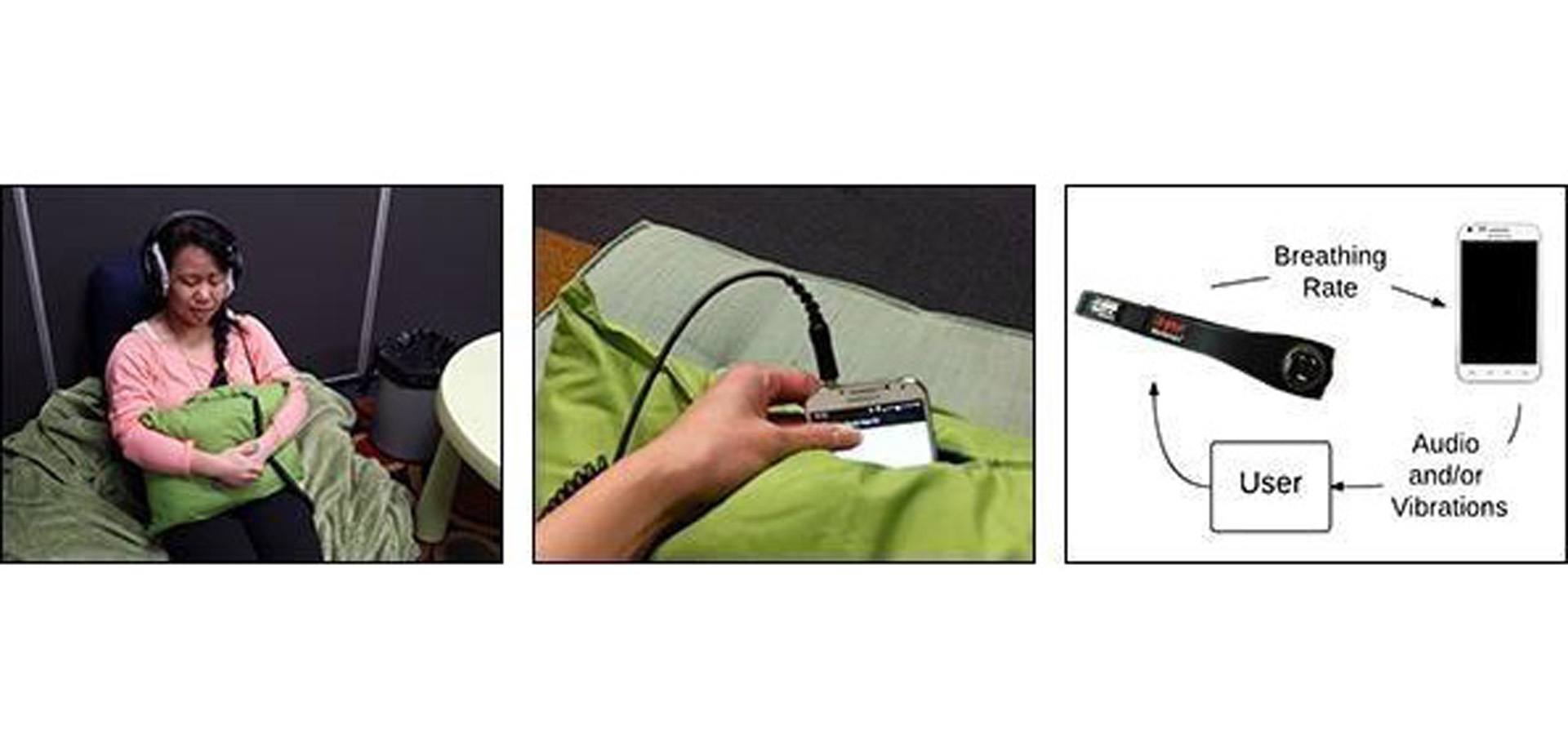“Mobile Haptic System Design to Evoke Relaxation through Paced Breathing” by Bumatay and Seo
Conference:
Type(s):
Entry Number: 37
Title:
- Mobile Haptic System Design to Evoke Relaxation through Paced Breathing
Presenter(s)/Author(s):
Abstract:
Stress is physical response that affects everyone in varying degrees. Throughout history, people have developed various practices to help cope with stress. Many of these practices focus on bringing awareness to the body and breath. Studies have shown that mindfulness meditation and paced breathing are effective tools for stress management [Brown, 2005].
Within the past year there have been huge strides in development and commercial interest regarding portable tools for health and fitness. There are a number of mobile applications currently available that are designed to guide the breath to support mindfulness meditation and paced breathing practices. These focus mainly on audio/visual cues, and not haptic cues. However, touch is an extremely personal and intimate sense. It is used to create a personal space, only experienced to those directly exposed to the action. Although, tactile exploration is underexplored in this particular area, there is evidence of the sense of touch being incorporated in traditional relaxation practices (e.g. stress balls, baoding balls, prayer beads). Available paced breathing applications are also mostly non-interactive. Those that are interactive read and display physiological data, but do not use this data to further tailor the experience to the user.
Our goal is to develop a mobile paced breathing tool focusing on haptic cues and biofeedback to explore the following questions: Do users prefer manual or biofeedback control? How effective is haptic guidance on its own? How may the addition of haptic feedback enhance audio based guidance?




